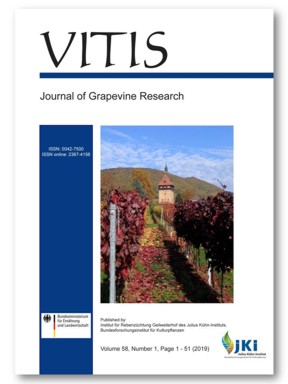Description of the Vitis vinifera L. phenotypic variability in eno-carpological traits by a Euro-Asiatic collaborative network among ampelographic collections
DOI:
https://doi.org/10.5073/vitis.2019.58.37-46Keywords:
Phenotyping; cultivars; morphology; phenolics; grape qualityAbstract
The grapevine intra-specific variability captured an increasing interest during the last decades, as demonstrated by the number of recently funded European projects focused on the grapevine biodiversity preservation. However, nowadays, crop plants are mainly characterized by genotyping methods. The present work summarizes the phenotype data collected among 20 ampelographic collections spread in 15 countries, covering mostly of the viticultural areas in the Euro-Asiatic range: from Portugal to Armenia and from Cyprus to Luxembourg. Together with agro-climatic characterization of the experimental site, in two years, about 2400 accessions were described, following a common experimental protocol mainly focused on the carpological and oenological traits, obtaining a general overview of the distribution of the considered phenotypic traits in the cultivated Vitis vinifera species. The most replicated cultivars were selected and, for the subset of these reference cultivars, their behavior in the different environmental conditions over sites and years was described by ANOVA methods.
Downloads
Additional Files
Published
Issue
Section
License
The content of VITIS is published under a Creative Commons Attribution 4.0 license. Any user is free to share and adapt (remix, transform, build upon) the content as long as the original publication is attributed (authors, title, year, journal, issue, pages) and any changes to the original are clearly labeled. We do not prohibit or charge a fee for reuse of published content. The use of general descriptive names, trade names, trademarks, and so forth in any publication herein, even if not specifically indicated, does not imply that these names are not protected by the relevant laws and regulations. The submitting author agrees to these terms on behalf of all co-authors when submitting a manuscript. Please be aware that this license cannot be revoked. All authors retain the copyright on their work and are able to enter into separate, additional contractual arrangements.



